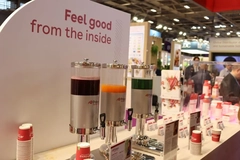
- Industry news
Industry news
- Category news
- Reports
- Key trends
- Multimedia
Multimedia
- Journal
- Events
- Suppliers
Suppliers
- Home
- Industry news
Industry news
- Category news
- Reports
- Key trends
- Multimedia
Multimedia
- Events
- Suppliers
Suppliers
Mushrooms- top source for antioxidant ergothioneine

Researchers have found that white button mushrooms have about 12 times more of the antioxidant than wheat germ and 4 times more than chicken liver.
02/09/05 Using a new, more sensitive-testing approach they developed for fungi, Penn State food scientists have found that mushrooms are a better natural source of the antioxidant ergothioneine than either of the two dietary sources previously believed to be best.
The researchers found that white button mushrooms, the most commonly consumed kind in the U.S., have about 12 times more of the antioxidant than wheat germ and 4 times more than chicken liver, the previous top-rated ergothioneine sources based on available data. Until the Penn State researchers developed their testing approach, known as an assay, there was no method employing the most sensitive modern instrumentation and analytical techniques to quantify the amount of ergothioneine in fungi. The researchers say that their assay can be used for other plants, too, not just mushrooms.
The Penn State researchers found that among the most commonly consumed mushrooms, portabellas and criminis have the most ergothioneine, followed closely by the white buttons. A standard 3-ounce USDA serving of these mushrooms, about the amount you'd put on a cheese steak or mushroom-topped burger, supplies up to 5 milligrams.
The exotic mushrooms have even more ergothioneine. The same standard serving size of shiitake, oyster, king oyster or maitake ( hen of the woods ) can contain up to 13mg in a 3-ounce serving or about 40 times as much as wheat germ.
In developing their new assay, the researchers adapted an assay used to quantify the amount of ergothioneine in bovine ocular tissue. They used high performance liquid chromatography ( HPLC ), a UV-VIS detector and mass spectroscopy, instruments normally used in analytical chemistry.
The Penn State Experiment Station and Mushroom Endowment Fund supported the study. The Mushroom Council and NutriCore Northeast are supporting the Penn State's team's continuing research in this area.











